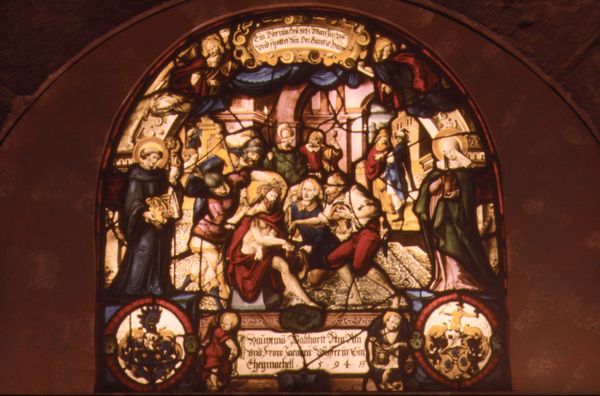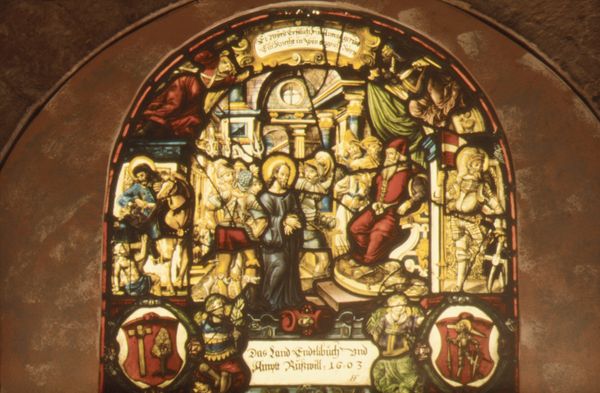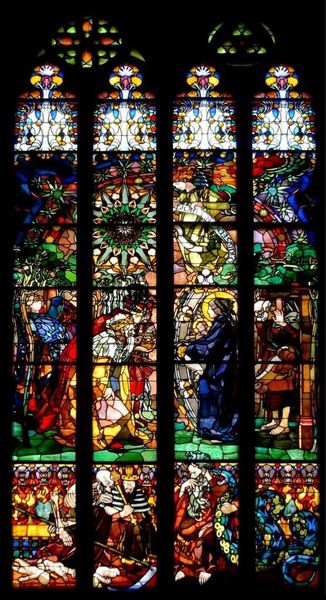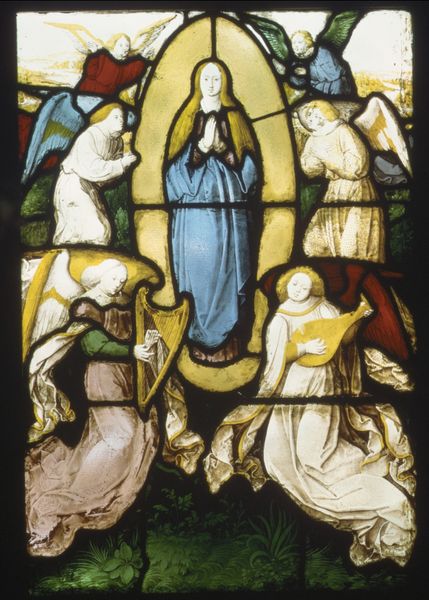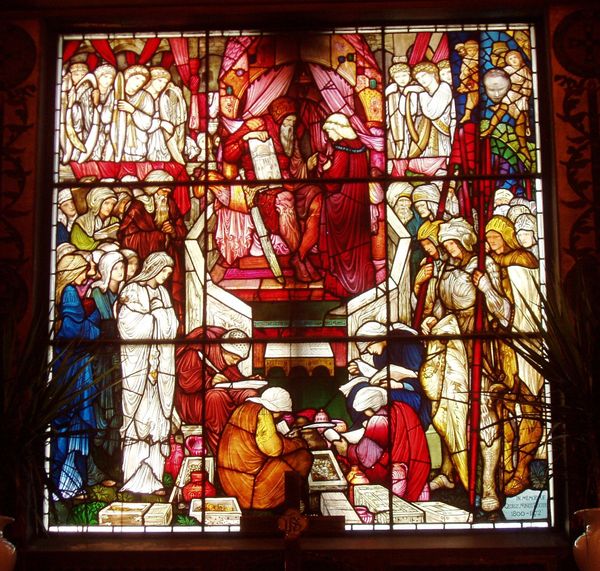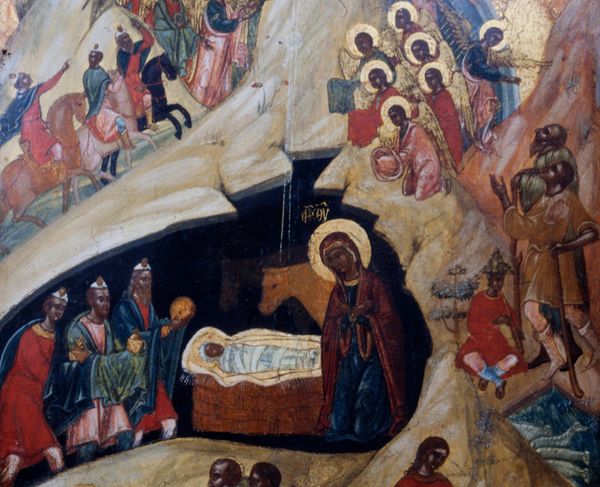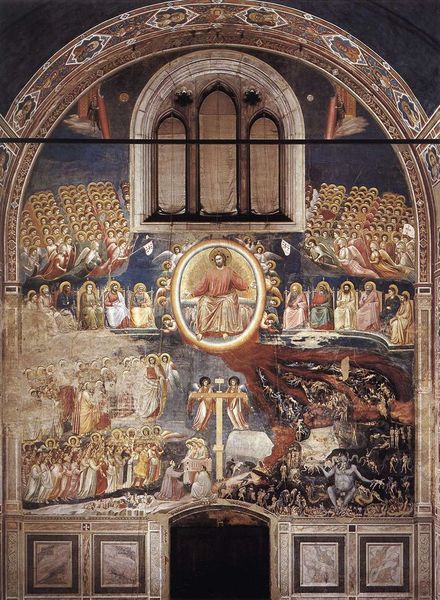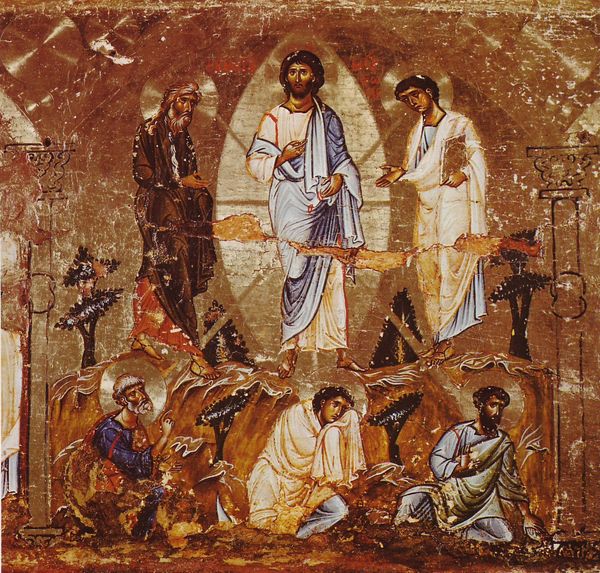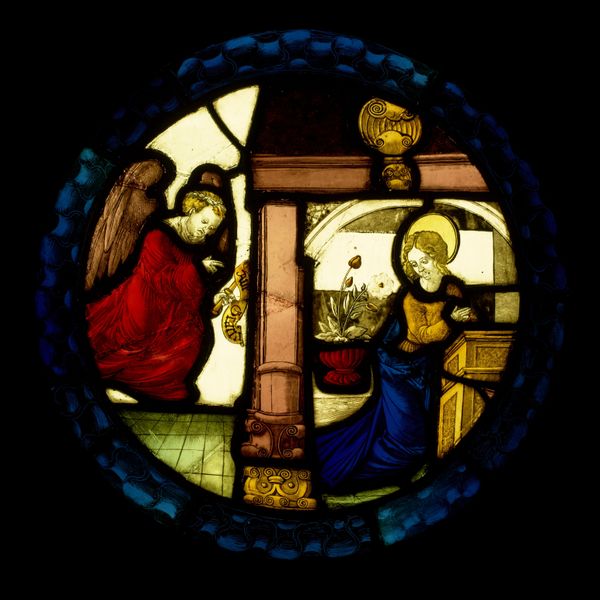
fresco, glass
#
medieval
#
figuration
#
historic architecture
#
fresco
#
glass
#
dark-toned
#
history-painting
#
decorative-art
#
christ
Dimensions: Overall: 27 × 28 1/4 in. (68.6 × 71.8 cm)
Copyright: Public Domain
Curator: Here we have "The Transfiguration," a stunning example of medieval craftsmanship, created in 1603. It’s currently housed at the Metropolitan Museum of Art. Editor: The first thing that strikes me is the tonal darkness and light fracturing. It feels dramatic, almost theatrical, especially the way the figures are arranged. Curator: Indeed. Stained glass relies heavily on transmitted light, transforming it into color. The structure consists of lead cames holding the colored glass in place, which themselves create strong directional lines. Editor: Those lead lines and their intersecting planes certainly amplify the narrative. Tell me, who are the key figures depicted here? The one centrally placed is obviously Christ. Curator: Precisely. This piece depicts Christ’s Transfiguration as described in the New Testament. Flanking him are Moses, holding the tablets, and Elijah. The three apostles, Peter, James, and John, are prostrated at the base of the mountain, overwhelmed by the divine vision. Editor: The symbolism is quite overt, wouldn’t you agree? Moses representing the Law, Elijah representing the Prophets… it's a direct line to Christian doctrine and continuity. I imagine most viewers from that time would instantly recognize the allegory. Curator: Undoubtedly. The work functions as both a religious instruction and a historical account for those not well-versed in text. We observe conventional iconography reinforced throughout. Editor: And in terms of social iconography, I notice those other background figures as well. Curator: Indeed, a careful eye notices symbols related to monastic tradition too. The decorative arts are so often intertwined with political statement of those social positions, a point so frequently misunderstood. Editor: Right, and in a world without ubiquitous images, these representations truly shaped worldviews, providing both an understanding of self and cultural other. Curator: Absolutely. It speaks to the enduring power of visual language and its capacity to influence understanding, isn't it? Editor: It does, and it certainly provides ample insights and historical and cultural perspective.
Comments
No comments
Be the first to comment and join the conversation on the ultimate creative platform.

